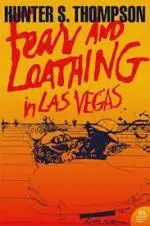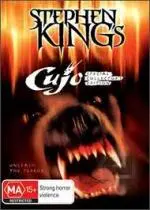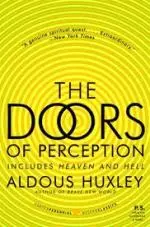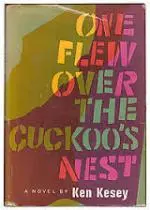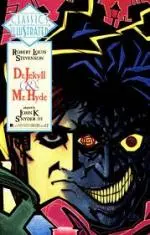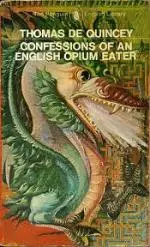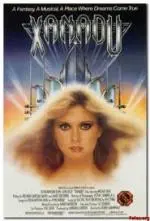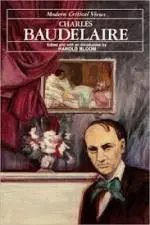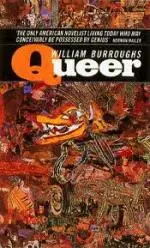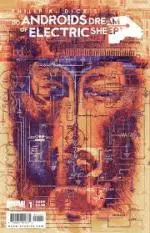In the early 1970s, an anti-drug propaganda piece hit the airwaves: a grim-faced fellow displayed a hideous painting purportedly created by someone on acid. It was a violent work, one that appeared to have been painted with barbed wire instead of a brush, and if memory serves, the color palette was limited to black, grey, and a particularly nauseating blood red. Referring to the tripping artist, the dour gentleman intoned, “She thought it was beautiful.” The ad’s intent seems to have been to frighten impressionable youngsters like me into taking a solemn vow of abstinence from LSD, but – you guessed it! – it only made me eager to try acid as soon as I could find a reputable source. I figured that if LSD could make that ugly painting seem beautiful, just think what it would do to the shitty real world I was stuck in.
In this, the second part of a miniseries devoted to literary drunks and druggies, we recall the world’s greatest, most prominent writers who thrived on narcotics and hallucinogens. It’s an acid trip down memory lane. Curiously, the list is made up entirely of men. Try as I might, I simply couldn’t find any major literary ladies who were known as much for their drugging as for their writing. (Yeah, yeah, Alice B. Toklas and her pot brownies. Trouble is, she wasn't a writer.) Suggestions are welcome.
![]() Hunter S. Thompson
Hunter S. Thompson
Leading the list, of course, is the Gonzo stylist Hunter S. Thompson, who once memorably stated, “I wouldn’t recommend sex, drugs, or insanity for everyone, but they’ve always worked for me.” His landmark Fear and Loathing in Las Vegas owed its success not only to Thompson’s manic, careening way with words but also to the accouterments he brought along to enhance his journey: “two bags of grass, seventy-five pellets of mescaline, five sheets of high-powered blotter acid, a salt shaker half full of cocaine, and a whole galaxy of multi-colored uppers, downers, screamers, laughers... and also a quart of tequila, a quart of rum, a case of Budweiser, a pint of raw ether, and two dozen amyls.” Facing increasing pain from a variety of ailments, Thompson shot himself in the head at the age of 67.
![]() Stephen King
Stephen King
Just as Richard Burton was so drunk that he couldn’t remember making Bluebeard, Stephen King was so high that he barely remembers writing Cujo. The difference between the two, however, is that Bluebeard is a disgrace, whereas Cujo is a modern classic. And unlike Burton’s, King’s family pulled an intervention trip on him; they sat him down and confronted him with bottles of Xanax and Valium and NyQuil and cough medicine, vials of coke and baggies of pot, and piles and piles of cigarette butts and empty beer cans. They made their point successfully. King has been drug and alcohol free ever since.
![]() Aldous Huxley
Aldous Huxley
To call Aldous Huxley, whose masterpiece Brave New World remains a staple of high school English classes, an acid freak is only unfair if you take the term acid freak as a cut. Huxley was a most serious tripper; he considered LSD and other hallucinogens to be portals into deep, mystical, spiritual perceptions of the sort experienced by holy people. Hunter Thompson dropped acid to party; Huxley dropped acid to pray. When he was suffering from the late stages of throat cancer, he wrote a note to his wife asking her to inject him with 100 mg of LSD. She did so. He died peacefully within a few hours. Bless him.
![]() Ken Kesey
Ken Kesey
The author of the blazingly brilliant novel One Flew Over the Cuckoo’s Nest, Ken Kesey began his long and productive association with LSD and other hallucinogens as part of experiments conducted by the United States government – specifically the CIA. One presumes that the drugs were of superior quality; if only the rest of us could trust our dealers to the same degree. Kesey was fascinated by his experiences and went on to create a series of what he called “acid tests,” which featured his friends Jack Kerouac, Neal Cassady, and Alan Ginsburg from the Beats, music by the Grateful Dead, and certain canonical design elements of the psychedelic era: fluorescent paint, black light, and strobes. Like Huxley’s, Kesey’s use of LSD appears to have enhanced his sanity: his literary farewell was a plea for peace after the 9/11 terrorist attacks. He died two months later of complications from liver cancer.
![]() Robert Louis Stevenson
Robert Louis Stevenson
Who’d’a thunk that the revered children’s book author Robert Louis Stevenson was into hallucinogenic fungi? If you only remember Stevenson’s classic kid's tales Treasure Island and Kidnapped, it seems a bit of a stretch. But Stevenson is also the creator of the classic doppelganger novel Strange Case of Dr. Jekyll and Mr. Hyde (there is no The in the original title), and suddenly his drug use makes a lot more autobiographical sense. Jekyll and Hyde, of course, is about a physician who conducts experiments on himself with a potion designed to separate his good side from his nasty one. Things don’t turn out quite according to plan. That was always my trouble with street drugs as well, though I’ve never killed anybody while flying on bad dope. At least not that I recall.
![]() Thomas De Quincey
Thomas De Quincey
You gotta love a guy who titled his autobiography Confessions of an English Opium Eater. I’m particularly fond of the modifier English, connoting as it does a certain primness and reticence that would be entirely absent if the eponymous druggie was, say, French. De Quincey’s opiate of choice was laudanum, a delicious combination of opium and alcohol that contains all the really good alkaloids – especially morphine and codeine – in a tincture form that one can ingest easily over ice if one chooses to do so. (Screw screwdrivers! Give me laudanum and Coke any day!) And contrary to anti-drug crusaders’ moralistic assumptions, De Quincey’s literary output suffered greatly when he wasn’t high. His is the reverse of a cautionary tale, and more power to him.
![]() Samuel Coleridge
Samuel Coleridge
Laudanum was also the favorite medicine of Samuel Coleridge, the author of The Rime of the Ancient Mariner and Kubla Khan, the latter being one of the druggiest epic poems ever written. “In Xanadu did Kubla Khan/A stately pleasure-dome decree….” A stately pleasure dome! Far fuckin' out! You could get really baked in a dome like this: “The shadow of the dome of pleasure/Floated midway on the waves…. It was a miracle of rare device,/A sunny pleasure-dome with caves of ice!” Just slide.
![]() Charles Baudelaire
Charles Baudelaire
Along with his friends Hugo, Delacroix, and Dumas, Charles Baudelaire formed a club much like the Mouseketeers, only Baudelaire and company spent their time drinking hashish-laced coffee instead of dancing around in little mouse-ear caps. They called it le Club des Hashishins, and they garbed themselves in Arab thobes, just to be different. That’s the legend, anyway. In point of fact, Baudelaire was much more of an observer than a participant in the Hashishins, preferring standard issue wine to the spiced, spiked coffee. Chickenshit.
![]() William S. Burroughs
William S. Burroughs
The author of the novels Junkie, Queer, and Naked Lunch, William S. Burroughs defines the term transgressive. Indeterminate in sexual orientation, thereby upsetting gays and straights alike, Burroughs was also indiscriminate in his use of drugs, though heroin, a drug that even confirmed druggies fear, might be said to have been his lifeblood. He even sold the stuff for a time to support his habit. To be clear, though, Burroughs was drunk, not high, when he shot his wife to death while playing “William Tell” with a loaded gun.
![]() Philip K. Dick
Philip K. Dick
Do Androids Dream of Electric Sheep? is possibly the most brilliant title ever. That it was thought up by a druggie ought to go without saying, but I’m saying it anyway to make a point: all of the writers in this list were aided, not hampered, by their drug use. Philip K. Dick loved a whole range of drugs, from the mellow (pot) to the freaky (mescaline). He took shitloads of amphetamines and tripped with abandon. He respected the effects that drugs had on his imagination, and he used what he learned while flying to create dazzling alternate worlds in his science fiction. Dick was no utopian, though; precisely the opposite. He wasn’t afraid to take chances – not in his drug use, and not in his writing. His visions were dark, his parallel universes disturbing. The drugs he took enhanced his genius, and he wasn’t ashamed.
So who did I leave out this time? Who are your favorite druggie writers? Why are there no druggie women? So many questions to ponder as you curl up on your couch with a good book and a potent spliff.
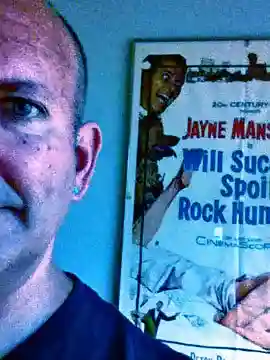
About the author
Ed Sikov is the author of 7 books about films and filmmakers, including On Sunset Boulevard:; The Life and Times of Billy Wilder; Mr. Strangelove: A Biography of Peter Sellers; and Dark Victory: The Life of Bette Davis.
